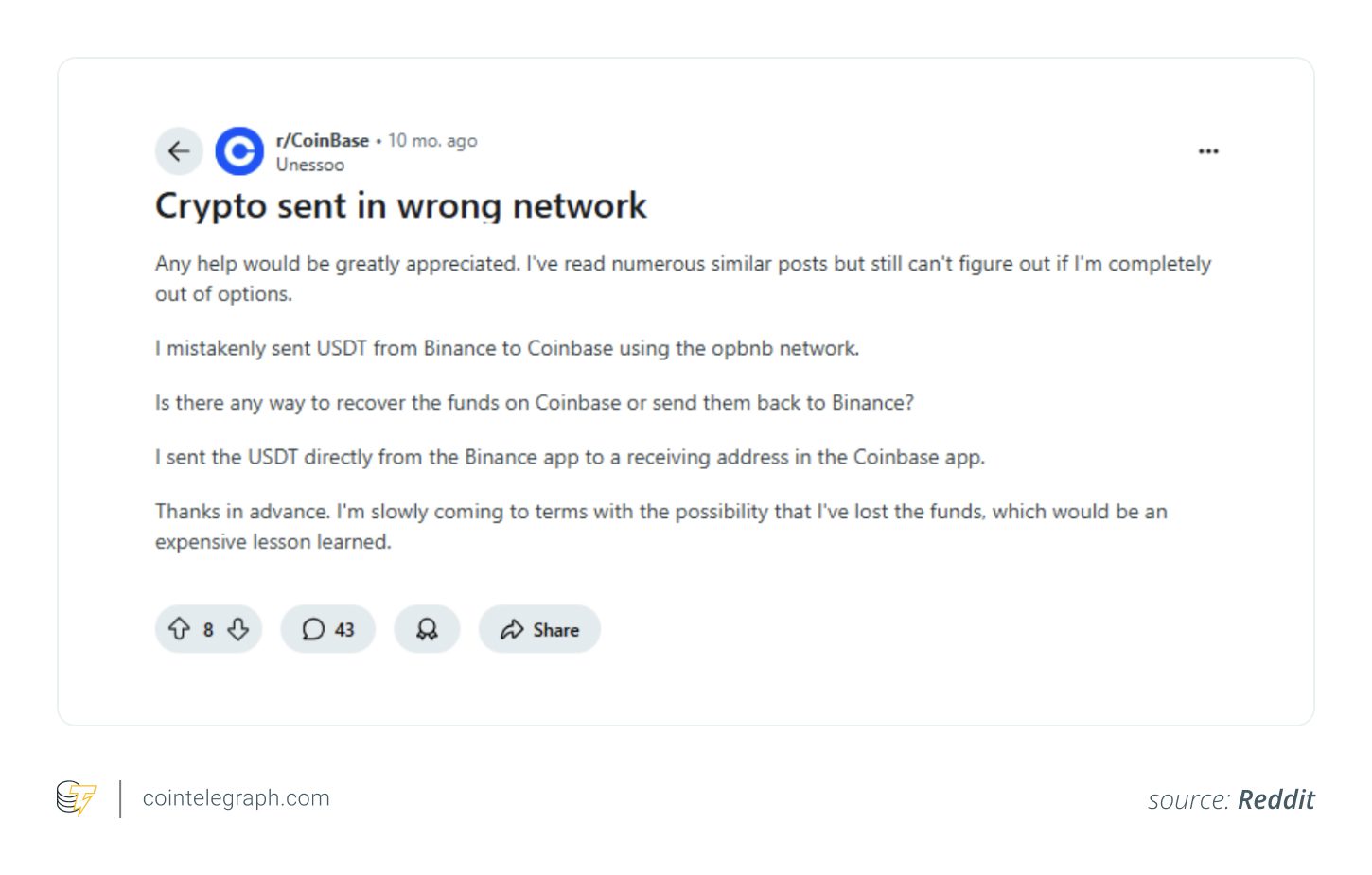Why Crypto Transfers Fail: A Comprehensive Guide
Crypto transfers can fail due to various reasons, often leading to frustration and potential loss of funds. However, most failures are preventable with careful attention to detail and a solid understanding of the process. This guide will explore common causes of failed crypto transfers, how to troubleshoot them, and essential checks to perform before sending any cryptocurrency.
Common Crypto Transfer Mistakes
Several common mistakes can lead to failed crypto transfers. Being aware of these pitfalls is the first step in preventing them:
- Incorrect Recipient Address: A single wrong character in the recipient’s wallet address can lead to irreversible loss.
- Wrong Network Selection: Sending tokens on the wrong network (e.g., sending USDT on Ethereum instead of Tron) will result in the funds being lost forever.
- Insufficient Gas Fees: Underpaying gas fees on networks like Ethereum can cause transactions to get stuck or fail.
- Wallet Incompatibility: Some wallets don’t support all tokens or blockchains, leading to transfer failures.


Reasons for Failed Crypto Transactions
Even if the input details are correct, crypto transactions can still fail due to:
- Insufficient Gas Fees: If the gas fee is too low, validators might ignore the transaction, causing it to fail or remain pending.
- Smart Contract Issues: Flaws in smart contract code can cause transactions to bounce back, particularly in DeFi.
- Network Congestion: High traffic can cause delays or failures, especially on networks like Ethereum.
Crypto Transfer Troubleshooting Guide
If a crypto transfer isn’t received, follow these steps:
- Verify the Recipient Address: Ensure the address is 100% correct.
- Confirm the Transfer Network: Double-check the network used (Ethereum, BSC, Polygon, etc.).
- Check the Block Explorer: Use a block explorer (Etherscan, Solscan) to check the transaction status.
- Review Your Wallet: See if the transfer is still pending.
- Check Asset Support: Confirm the recipient’s wallet supports the asset.
Essential Checks Before Sending Crypto
Prevention is key to avoiding failed transfers. Always verify these details:
- Recipient’s Wallet Address: Copy-paste instead of typing manually.
- Network Compatibility: Ensure the address matches the network and supports the token.
- Gas Fees: Have sufficient funds to cover gas fees.
- Receiving Wallet Support: Confirm the receiving wallet can accept the token.
Crypto Transfer Speed and Networks
Different blockchains offer varying transaction speeds:
- Fast Networks: Solana, Avalanche, and Tron offer near-instant transactions.
- Slower Networks: Bitcoin and Ethereum can take longer, especially during high traffic.
Knowing the average speed of the network helps set realistic expectations.

The Crypto Travel Rule and Transfer Failures
Regulatory hurdles like the Travel Rule can cause transfers to freeze if sender/recipient data doesn’t align across jurisdictions.
How to Avoid Failed Crypto Transactions
Follow these best practices:
- Send a Test Amount: Always send a small amount first.
- Monitor Gas Fees: Use gas trackers like Etherscan Gas Tracker.
- Take Your Time: Avoid rushing the process.
How to Verify a Crypto Transfer
Use the transaction hash in a block explorer to check the status of your transfer. This provides live updates on whether the transaction is pending, confirmed, or failed.

Mastering Crypto Transfers: Confidence Over Chaos
By triple-checking details, monitoring fees, and staying informed, you can transform crypto transfers from a gamble into a confident routine. Slow down, prepare, and stay curious to navigate the crypto world successfully.